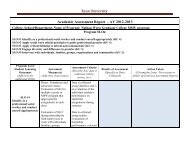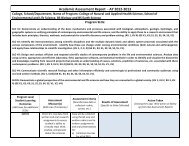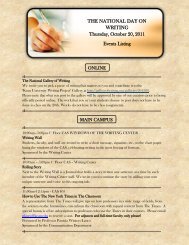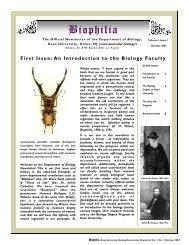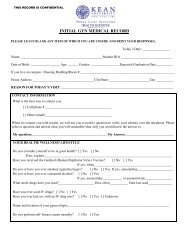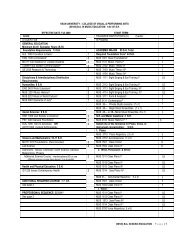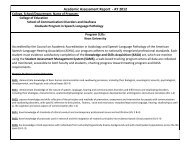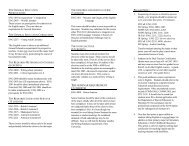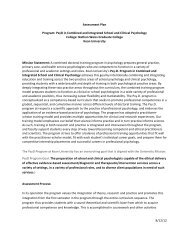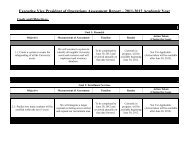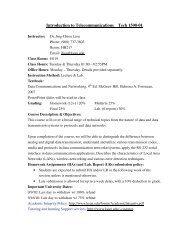GeorGe SeGal - Kean University
GeorGe SeGal - Kean University
GeorGe SeGal - Kean University
Create successful ePaper yourself
Turn your PDF publications into a flip-book with our unique Google optimized e-Paper software.
VI<br />
BY nEIL tEtKoWSKI<br />
GEorGE SEGAL PortrAItS:<br />
ScuLPturE AnD DrAWInGS<br />
there is a paradox here. George Segal sculptures are not portraits in the traditional sense, yet<br />
they portray humanity. they take on a universal character in part because of the anonymous<br />
quality of the figures, which appear to be nobody in particular, yet mysteriously they are all people at<br />
the same time. the enduring strength of the work is found in the presence of the human forms,<br />
which typically eclipse the individual and suggest qualities that all people have in common. Images<br />
of people are the central subjects in the work of George Segal. But we rarely think of this artist as<br />
one who made portraits; perhaps universal portraits, portraits of humanity, but individual portraits?<br />
At first glance, the fourteen drawings in this exhibition present a perplexing issue; in contrast to the<br />
sculptures, each drawing is a likeness of the subject, i.e., a traditional portrait.<br />
In the past, it just did not matter to me who had been on the inside of the molded cast, who<br />
the actual people were that had modeled under the skins of plaster that later became great<br />
works of Segal’s art. In fact the sculptures are actually based on negative spaces, like the human<br />
spaces in the lava of Pompeii. A boy is running, but there is no boy. Yet he is still running,<br />
running and running forever. I have been moved by the profound human essence that these<br />
ancient voids of space exude. It doesn’t matter who that specific boy actually was, trapped in<br />
volcanic ash in A.D. 79.<br />
My perspective began to change about a year ago when I had my first opportunity to visit the<br />
Segal Foundation in South Brunswick, new Jersey. I quickly learned a few important things<br />
about how George Segal worked. I learned that Segal did not hire models. Apparently he had<br />
to “feel” something for his model and preferred to work with someone he knew. there had to<br />
be a connection, a “chemistry.” So, like a shaman, the magic of this artist was to transform the<br />
singular into the collective, to assist the individual in a white costume to take on the collective<br />
spirit. through Segal’s plaster ritual, the artist’s subject took on the universal power to represent<br />
all people, potentially a race of equals.<br />
upon entering the tranquil studio of George Segal one is surrounded by artwork. room after<br />
room contains life-size installations. Some works are specific sculptures that are very recognizable,<br />
well-known artworks, such as the Depression Bread Line at the FDr Memorial in Washington, D.c.<br />
I knew that my friend and colleague Donald Lokuta had been one of the models for that famous<br />
group of five men that commemorate the Great Depression and symbolize the universal sorrow of<br />
hard luck and misfortune. What was news to me was to learn that the artist himself modeled for



